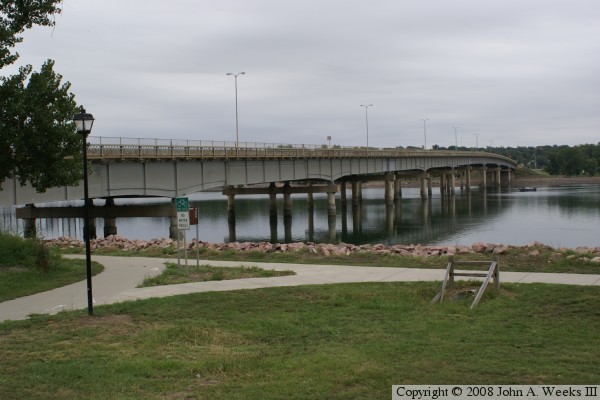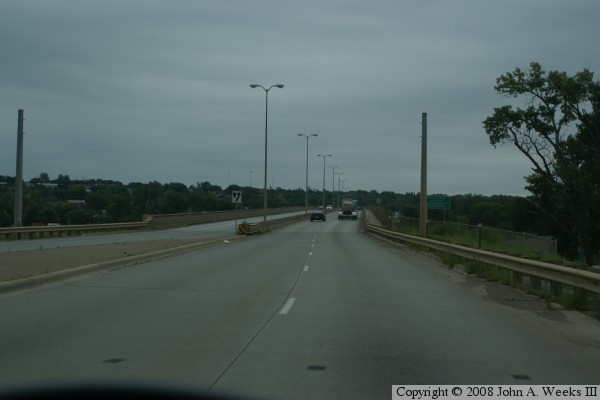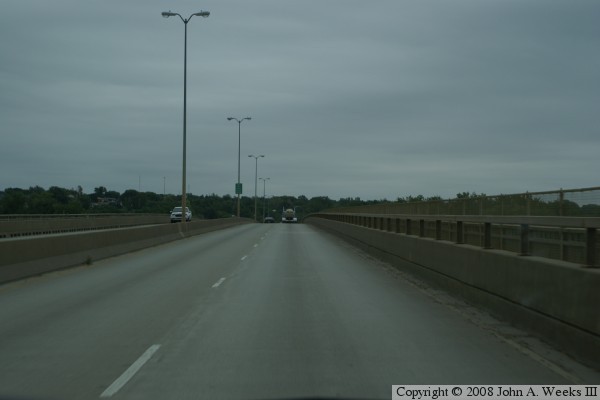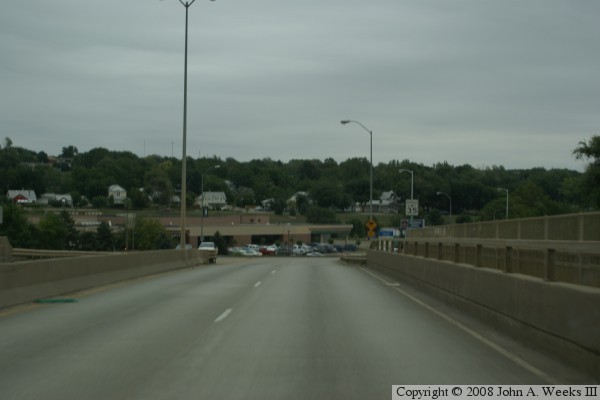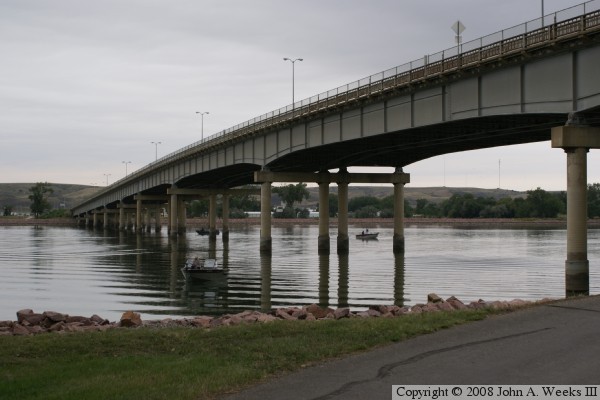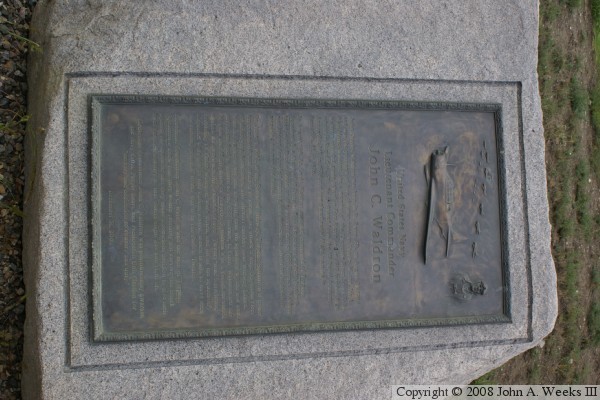The next bridge that I found records on was a structure called "the viaduct", built in 1907 and finished shortly after the major C&NW railroad bridge was completed. I found no other information on this bridge.
The State of South Dakota embarked on a major bridge building project in the 1920s. The idea was to build five world-class bridges over the Missouri River approximately evenly spaced across the state. Of the five locations, Pierre was given second place in line after Wheeler, but in front of Chamberlain, Mobridge, and Forest City. These bridges were all cookie cutter Pennsylvania style through truss structures with four to six trusses per bridge. The idea was to keep costs down by building shorter trusses, even if that meant having more trusses per span. Those economics did not work at Pierre. The bedrock was much deeper than at other locations, which resulted in more expensive piers. As a result, longer trusses were used to reduce the number of piers. The result was the use of 300 foot truss units rather than the state standard of 256 feet. Located just down river from the railroad bridge, the highway bridge at Pierre was completed by 1926.
Of the 1920s era bridges built by the state, all but the Pierre bridge had to be replaced in the 1950s due to the building of the massive dams on the Missouri River. When completed, the waters behind these dams would flood four of the five bridge projects. The Big Bend dam was being built below Pierre, and the water backed up behind that dam in Lake Sharpe would back up all the way to the Oahe Dam (located just above Pierre). The resulting four foot increase in water level was not enough to flood out the highway bridge at Pierre. At the same time, this bridge had more traffic than the other bridges, and it was nearing the end of its useful life. The state would need to invest significant money into repairs, or build a new bridge.
The State of South Dakota started work on designing a new bridge for Pierre in the late 1950s. The new bridge was opened in 1960. If followed a new alignment just south of the 1920s bridge. The new bridge was a 4-lane structure built from steel girders with a concrete deck. To gain the required 30 feet in clearance above the Missouri River, the bridge has a pronounced hump. While it has no shoulders, the bridge has sidewalks on both sides, and a Jersey-style center divider. The divider and the guardrails that protect the sidewalks are of a modern design, and have likely been added since the bridge was built.
When the new Fort Pierre Bridge was built, the old 1920s bridge was left in place. The theory was that it would cost at least $150,000 to remove, so why spend the money if it wasn't a hazard. In addition, it could potentially act in a reserve capacity to be used if something were to render the modern bridge unusable. The old bridge was in place as late as 1980, but is gone in 2007. I have not been able to pin down when it was removed.
There is a monument at the base of the Fort Pierre Bridge dedicated to John C. Waldron. Lt. Commander Waldron was in command of Torpedo 8, a flight of Douglas TBD-1 Devastators that took part in the Battle of Midway. All 15 of the planes in Torpedo 8 were shot down, and only one aircrew member survived. That was Ensign George Gay. Gay had a front row seat floating in the Pacific Ocean to see three of the four Japanese aircraft carriers be hit and sunk in just a matter of minutes, which changed the course of the war. Waldron was born in Fort Pierre in 1900.

